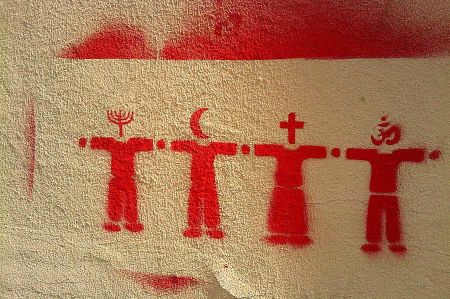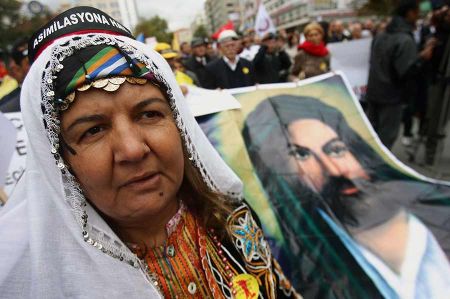Alevis - on the history of their origins and beliefs
- Written by Portal Editor
There are different theories and basic views in science about the origin of Alevism. One opinion tends to be that it is a religious movement within the Shia (Arabic: party, in the sense of Ali's party).
Another view is that the origin of Alevism is more pre-Islamic, perhaps even in Mesopotamia and rooted in the Zoroastrian religion.
History of the origins of Alevism
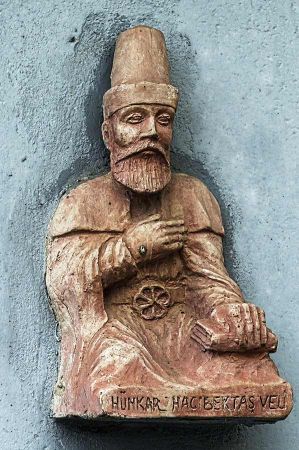 The most important origin myth for Alevism is the Battle of Karbala on October 10, 680, in which the group, conceived as a community of fate, became collective for the first time
The most important origin myth for Alevism is the Battle of Karbala on October 10, 680, in which the group, conceived as a community of fate, became collective for the first time
is said to have experienced injustice. In the course of the succession disputes, the early Islamic community split into several groups. The most well-known groups today were the Shiites and the Sunnis. The Alevis can be broadly embedded in the Shiite context. Their view became concrete in the 13th century through the fusion of Shia in the form of the worship of Ali ibn Abi Talib with the mystical interpretation of the Koran (Sufism).
This development is attributed primarily to Haji Baktash Wali and other clerics returned. Under the Ottomans, the Alevis were persecuted as heretics. Because of the oppression and threatened situation of the Alevis among other Muslims. There were repeated bloody uprisings over time. From the Turkish state to this day they are not recognized as a religious minority.
Doctrine and customs of the Alevis
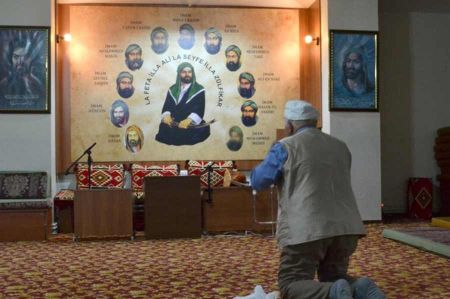 A special feature of the belief is the pronounced reverence for Ali ibn Abu Talib (hence the derivation of the term Alevite) or for the twelve Imams, who were also revered by the Shiites and who - with the exception of the twelfth - were all murdered; the 12th continued to live in secret until his return. Despite this Shiite-influenced idea, there are significant differences from Shia teachings, especially in theological interpretations, such as the idea of God and faith, as well as in the practice of faith.
A special feature of the belief is the pronounced reverence for Ali ibn Abu Talib (hence the derivation of the term Alevite) or for the twelve Imams, who were also revered by the Shiites and who - with the exception of the twelfth - were all murdered; the 12th continued to live in secret until his return. Despite this Shiite-influenced idea, there are significant differences from Shia teachings, especially in theological interpretations, such as the idea of God and faith, as well as in the practice of faith.
In a sense, the tradition combines Shia with elements from a wide variety of areas pre-Islamic religions of Mesopotamia as well as Sufism, Islamic mysticism. Alevis do not pray in mosques and do not interpret the Koran literally, but rather search the meaning behind the revelations. They do not live according to the “Five Pillars of Islam” because they see these “pillars” as externals. They counter this with their mysticism.
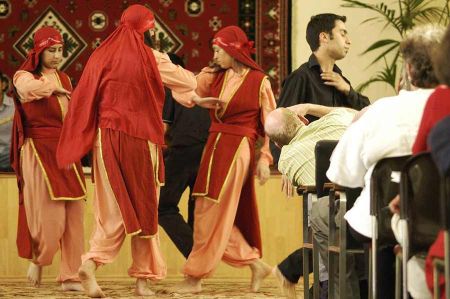 A central element of the belief system is the focus on people. The Alevis follow religious regulations that are considered mandatory for orthodox Muslims Prerequisites apply, more dialectically. According to their understanding, Sharia law or Surface, the obvious, is overcome in religion, as mysticism is the foundation forms. A dogmatic interpretation of religion is rejected; the ritual prayer (salat) not performed in the conventional Shiite or Sunni form. Outside the Alevi worship (Cem) requires no special room or space for prayer a special time. The faith is strongly influenced by humanism and universalism. At the centre is the Human beings as self-responsible beings in their relationship to their fellow human beings. The question after death and ideas about the afterlife are irrelevant. The soul is seen as immortal; She strives for perfection with God through enlightenment The teaching also contains relevant elements from Zoroastrianism. “Right Action, right thinking, right speaking”. The four sacred elements: fire, water, Earth and air also come from this teaching.
A central element of the belief system is the focus on people. The Alevis follow religious regulations that are considered mandatory for orthodox Muslims Prerequisites apply, more dialectically. According to their understanding, Sharia law or Surface, the obvious, is overcome in religion, as mysticism is the foundation forms. A dogmatic interpretation of religion is rejected; the ritual prayer (salat) not performed in the conventional Shiite or Sunni form. Outside the Alevi worship (Cem) requires no special room or space for prayer a special time. The faith is strongly influenced by humanism and universalism. At the centre is the Human beings as self-responsible beings in their relationship to their fellow human beings. The question after death and ideas about the afterlife are irrelevant. The soul is seen as immortal; She strives for perfection with God through enlightenment The teaching also contains relevant elements from Zoroastrianism. “Right Action, right thinking, right speaking”. The four sacred elements: fire, water, Earth and air also come from this teaching.
Worship and prayer
The service, called Cem, takes place in a Cemevi (meeting house). Texts are recited and Semah is ritually danced, analogous to the Sufist tradition. However, unlike the Sufis, the dance is performed by women and men simultaneously and equally. The Semah is an important ritual dance and is one of the 12 duties in the Cem event. Its meaning is to become one with God and nature.
Beliefs
Alevis believe that the holy brothers Hızır and İlyas lived as prophets and drank the so-called “water of immortality”. According to this belief, the brothers come to the aid of those in need. They would be ready for and rescue those who are in distress and cry out for help “from the bottom of their hearts.” They bring people happiness and possessions. Every year the festival of Hızır is celebrated in the second week of February. Hızır as a concept occupies an important place in the everyday life of Alevis. Many Alevis make their vows in the name of Hızır and ask or request something in his name. “Thank Hızır”, “Hızır may come”.
Regulations
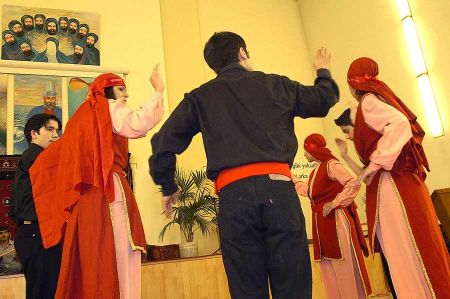 The doctrine is based on people's freedom of choice and freedom of belief. Nobody has an obligation to do or believe anything. The cornerstones of the regulations are united in this one sentence "eline beline diline sahip ol":
The doctrine is based on people's freedom of choice and freedom of belief. Nobody has an obligation to do or believe anything. The cornerstones of the regulations are united in this one sentence "eline beline diline sahip ol":
elinesahip ol: Control your hands. It represents the negative potential that hands are capable of, so: don't commit theft, don't destroy and use your hands for something useful.
belinesahip ol: Control your loins. The loin is synonymous with drives, especially of a sexual nature.
dilinesahip ol: Control your tongue. The tongue stands for communication and that it is often abused through untruths, but also through careless choice of words and can ultimately cause more suffering than perhaps a sword (e.g. perjury, slander, character assassination).
The prohibitions against killing, theft, slander and adultery apply
Alevis towards all people. In doing so, they want to promote humanity and coexistence among all people.
 Four goals
Four goals
- The first gate is Sharia, i.e. H. the acceptance of the laws and duties of the community in which you live.
- The second goal is knowledge of individual rights and entitlements himself has and provides; d. H. what do I desire, what is mine?
- The third gate is the knowledge of one's neighbour; d. H. what does the fellow human being desire, what belongs to fellow human beings?
- Reaching the fourth gate continues the preoccupation with the rights andobligations of the community.
Story
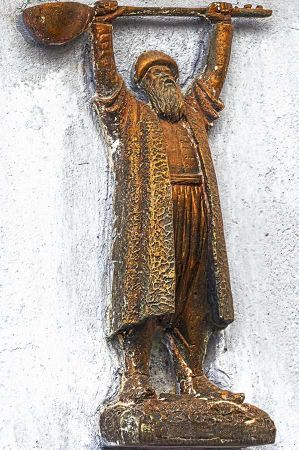 Due to their oppression in the Ottoman Empire, most Alevis became At the beginning of the 20th century, initially a supporter of Kemal Ataturk, as it was a secular state gave them more freedom without a caliphate. Due to the new laws of the state However, all Alevi orders and sects were also closed. This is how the Haci Bektas became Veli-Tekke in Nevşehir converted into a museum. Despite the legal improvement came.There have been repeated pogroms against Alevis in Turkey's recent history.
Due to their oppression in the Ottoman Empire, most Alevis became At the beginning of the 20th century, initially a supporter of Kemal Ataturk, as it was a secular state gave them more freedom without a caliphate. Due to the new laws of the state However, all Alevi orders and sects were also closed. This is how the Haci Bektas became Veli-Tekke in Nevşehir converted into a museum. Despite the legal improvement came.There have been repeated pogroms against Alevis in Turkey's recent history.
Please read as well:
